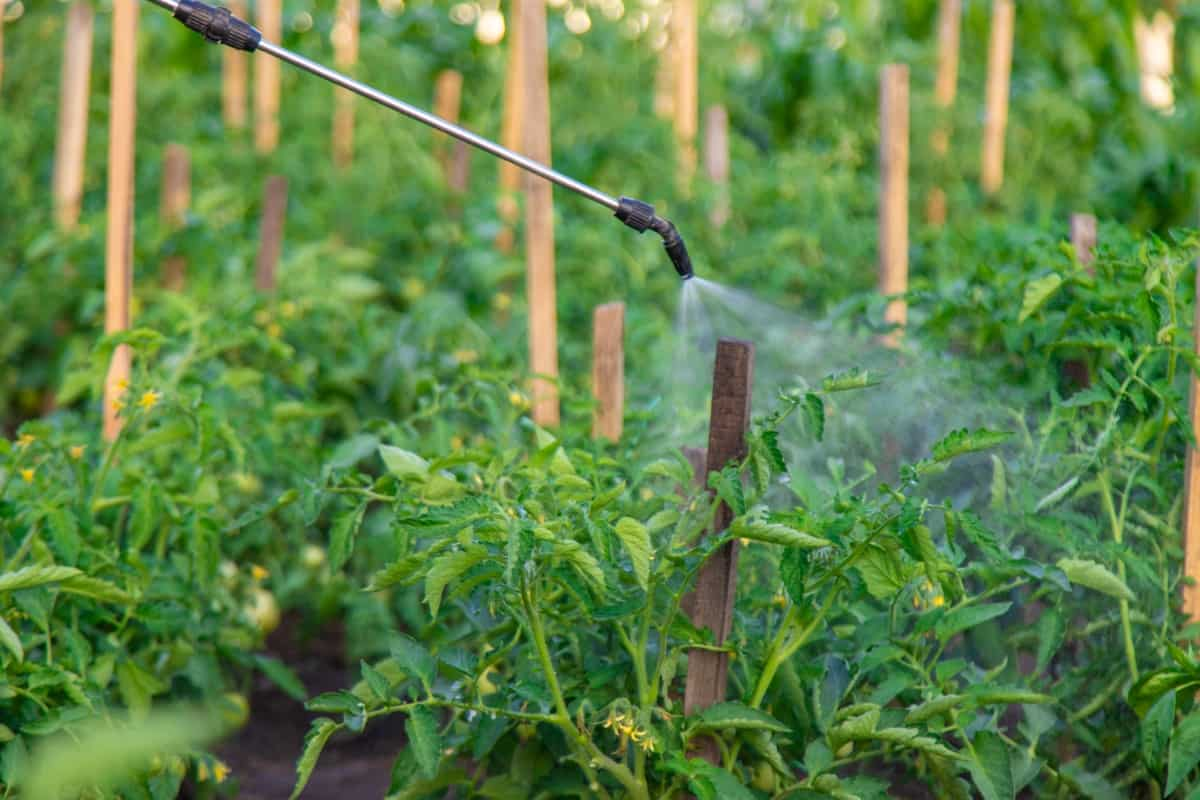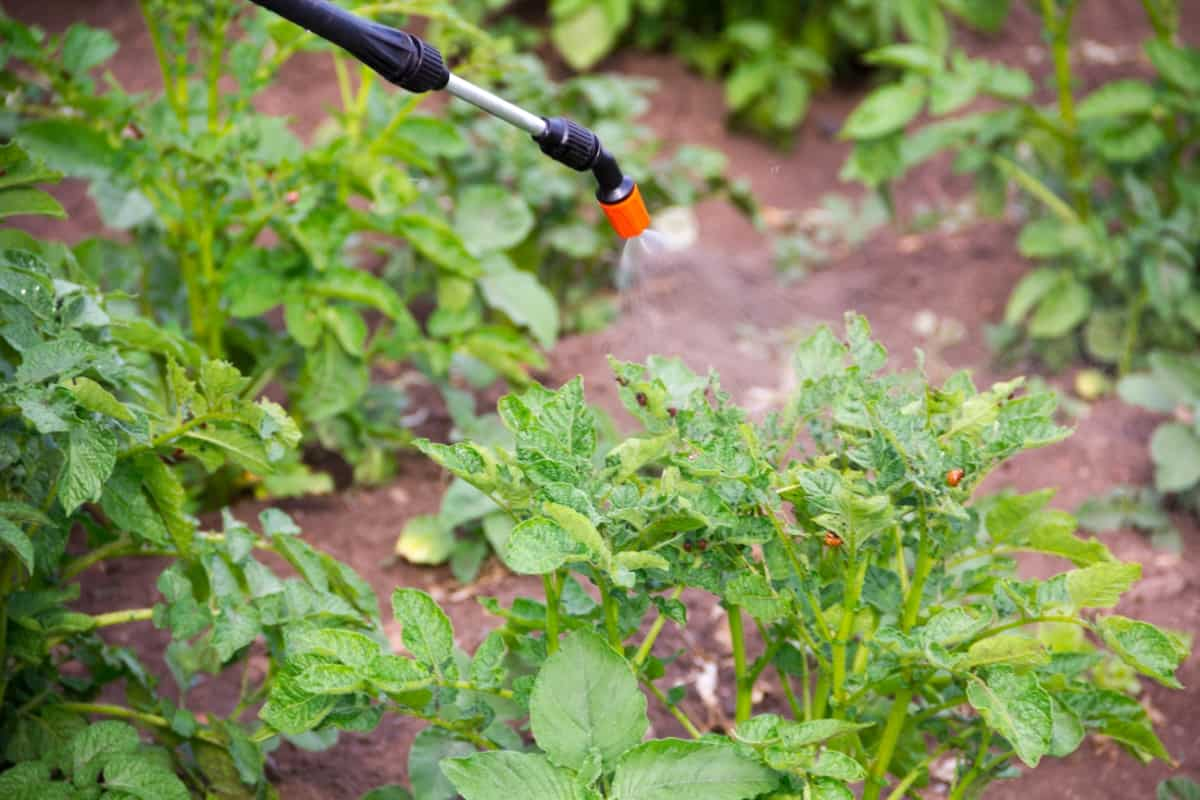Sevin Dust is a widely used insecticide that can help protect your vegetable crops from various pests. This article provides essential insights into the optimal timing and proper application techniques to maximize its efficacy while minimizing potential harm to your plants and the environment. Learn the best time for applying sevin dust in vegetable gardens, how to use it safely, and gain valuable tips to ensure a thriving and pest-free vegetable garden. Empower yourself with the knowledge to safeguard your crops and promote a healthy, bountiful harvest.

Using Sevin Dust on Vegetable Gardens
The Benefits of Sevin Dust for Pest Control in Home Vegetable Gardens
Sevin Dust’s active ingredient, carbaryl, is effective against a broad spectrum of pests like beetles, caterpillars, and aphids. One of the key benefits of using sevin dust in vegetable gardens is its quick knockdown effect, rapidly eliminating existing infestations. Sevin Dust is user-friendly, available in a convenient powder form, and easy to apply directly to plant surfaces. Its residual action provides ongoing protection, reducing the risk of future pest damage. Additionally, it is versatile and suitable for various vegetable crops.
Step-By-Step Guide to Applying Sevin Dust in Vegetable Gardens
- Identify the specific pests affecting your vegetable garden to determine the need for Sevin Dust.
- Applying sevin dust in vegetable gardens in the early morning or late evening to minimize the impact on pollinators, avoiding windy days.
- Wear appropriate protective gear such as hand gloves, long sleeves, and a mask to avoid skin contact and inhalation.
- Sprinkle Sevin Dust evenly on plant surfaces, focusing on the undersides of foliage and areas prone to pest activity.
- Be cautious around blooming flowers to protect pollinators; apply Sevin Dust when flowers are not in bloom.
- Follow label instructions for reapplication based on pest severity, ensuring ongoing protection without overuse.
- Store Sevin Dust in a cool, dry place away from children and pets, adhering to safety precautions for future use.
Common Vegetable Garden Pests Controlled by Sevin Dust
Sevin Dust effectively targets a range of common vegetable garden pests, including aphids, caterpillars, beetles, thrips, mites, and whiteflies. This versatile insecticide acts as a powerful deterrent against destructive insects that can compromise the health and yield of your vegetable crops.
By applying Sevin dust in vegetable gardens, you can control the infestations of these pests, protecting your plants from feeding damage and potential diseases. Its broad-spectrum action makes it a valuable tool for gardeners seeking an efficient and reliable solution to combat various insect threats, promoting a thriving and pest-resistant vegetable garden. Follow product dosage and usage instructions for safe and effective application.
Optimal Timing and Frequency for Sevin Dust Application in Vegetable Gardening
The frequency and best time to apply sevin dust in vegetable gardens depends on several factors. Firstly, apply Sevin Dust at the first signs of pest infestation, ideally during the early morning or late evening, to minimize negative effects on beneficial insects. Repeat applications every 7-14 days or as needed, considering the severity of pest pressure.
In case you missed it: The Ultimate Vegetable Seed Buying Guide for Beginners: Seed Buying 101

Focus on critical times, such as when plants are most vulnerable to specific pests, like during flowering or fruiting stages. Regular monitoring of your vegetable garden is essential to identify pests promptly. Avoid excessive use and follow label instructions meticulously to prevent resistance and minimize environmental impact.
Protecting Beneficial Insects: Balancing Sevin Dust Use with Ecosystem Health
Applying Sevin dust in vegetable gardens judiciously, focusing on targeted areas rather than widespread application. Time your usage carefully to minimize the impact on pollinators, applying it during non-blooming periods or when pollinators are less active. Utilize alternative pest control methods, like biological controls, companion planting, and integrated pest management (IPM), to create a more sustainable and diverse ecosystem. Regularly assess the pest situation to adjust the Sevin Dust application frequency accordingly.
The Dos and Don’ts of Sevin Dust in Vegetable Gardens
Dos
- Identify specific pests before applying Sevin Dust.
- Wear gloves, long sleeves, and a mask during application.
- Apply during early morning or late evening to minimize impact on pollinators.
- Sprinkle Sevin Dust evenly on plant surfaces, focusing on the undersides of leaves.
- Apply only where pests are present, avoiding non-infested areas.
- Follow label instructions for reapplication based on pest severity.
- Store Sevin Dust in a cool, dry place away from children and pets.
Don’ts
- Avoid excessive application to prevent environmental impact.
- Do not apply to protect pollinators when flowers are in bloom.
- Avoid unnecessary widespread use; focus on affected areas.
- Prevent direct contact; use protective gear to minimize risk.
- Always adhere to product guidelines for safe and effective use.
Combining Sevin Dust with Other Pest Control Methods in Vegetable Gardens
Achieving comprehensive pest control in vegetable gardens often involves combining applying Sevin dust in vegetable gardens with other effective methods for a synergistic approach. Implementing companion planting, such as incorporating pest-repelling herbs and flowers, can enhance Sevin Dust’s impact. Employing biological controls like introducing beneficial insects or using neem oil alongside Sevin Dust can provide a well-rounded defense against pests.
In case you missed it: How to Grow New Zealand Spinach in Your Garden: Step-By-Step Guide to Planting to Harvest

Integrated pest management (IPM) strategies, including regular monitoring and early intervention, further complement Sevin Dust’s targeted application. Rotate crops to disrupt pest life cycles and reduce dependency on any single control method. By integrating various techniques, you not only enhance pest resistance management but also minimize environmental impact.
Precautions for Harvesting Vegetables After Sevin Dust Application
- Adhere to the recommended waiting period mentioned on the Sevin Dust label before harvesting. This allows the pesticide to break down and reduces the risk of residue on edible parts.
- Thoroughly wash harvested vegetables under running water to remove any remaining pesticide residues. Use a soft brush for items with firmer surfaces.
- Consider peeling or trimming the outer layers of vegetables, especially those with absorbent surfaces, to reduce potential pesticide residues further.
- Wear gloves and protective clothing during harvest to minimize direct contact with treated plants.
- Always follow label instructions regarding pre-harvest intervals and safety precautions to ensure compliance and minimize health risks.
Troubleshooting Common Issues when Using Sevin Dust in Vegetable Gardens
- Overapplication: Avoid excessively applying Sevin dust in vegetable gardens, as it may lead to environmental concerns and harm beneficial insects.
- Residue on Vegetables: Follow recommended waiting periods before harvest to minimize pesticide residue on edible parts.
- Timing: Apply Sevin Dust during non-blooming periods to protect pollinators and beneficial insects.
- Weather Conditions: Avoid application on windy days to prevent drift, and reapply after rain to maintain effectiveness.
- Storage: Ensure proper storage to prevent contamination and degradation of the product.
- Resistance: Rotate pesticides and incorporate other pest control methods to reduce the risk of pest resistance.
- Impact on Beneficial Insects: Consider alternative methods that protect beneficial insects while targeting pests.
In case you missed it: How to Increase Cantaloupe Fruit Size: Exploring Cantaloupe Fruit Growth Optimization

Conclusion
In conclusion, mastering the application of Sevin Dust in your vegetable garden requires a strategic and informed approach. By identifying pests, timing applications carefully, and incorporating safety measures, you can harness the benefits of Sevin Dust while preserving your garden’s health. A balance between environmental sustainability and pest control ensures a thriving vegetable garden, abundant harvests, and a harmonious ecosystem.
- Feed Your Flock for Less: Top 10 Tips to Save on Chicken Feed
- Ultimate Guide to Ossabaw Island Hog: Breeding, Raising, Diet, and Care
- Hatching Answers: The Top 10 Reasons Your Chickens Aren’t Laying Eggs
- Eggs and Economics: Breaking Down the Cost of Raising Backyard Chickens
- Defend Your Greens: Proven Methods to Keep Iguanas Out of Your Garden
- Ultimate Guide to Cinnamon Queen Chicken: A Comprehensive Guide for Beginners
- Ultimate Guide to California Tan Chicken: Breeding, Raising, Diet, Egg-Production and Care
- Ultimate Guide to Marsh Daisy Chicken: Breeding, Raising, Diet, and Care
- 10 Types of Chicken Farming Businesses You Can Start for Profits